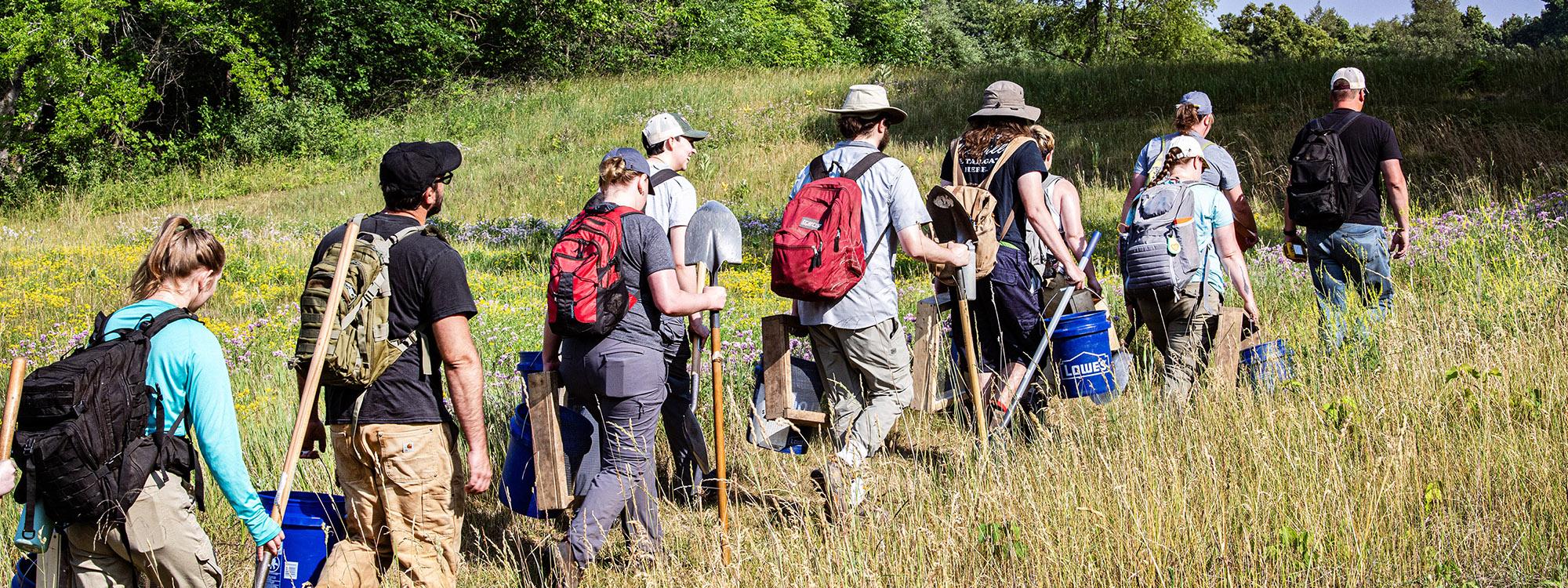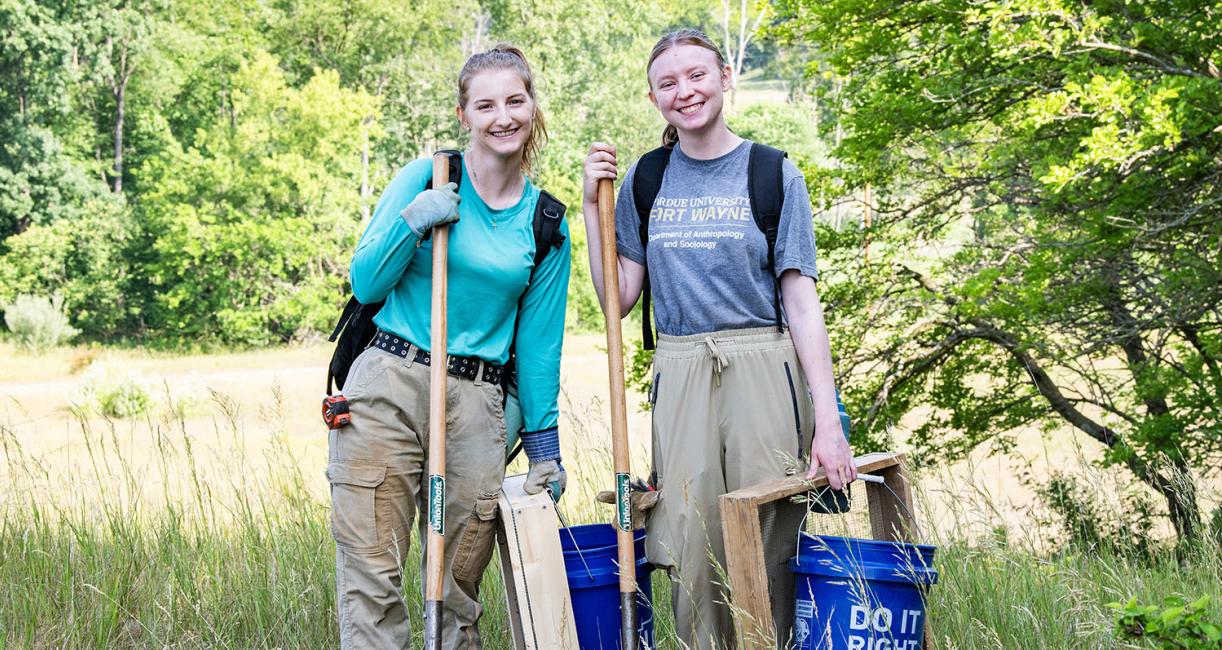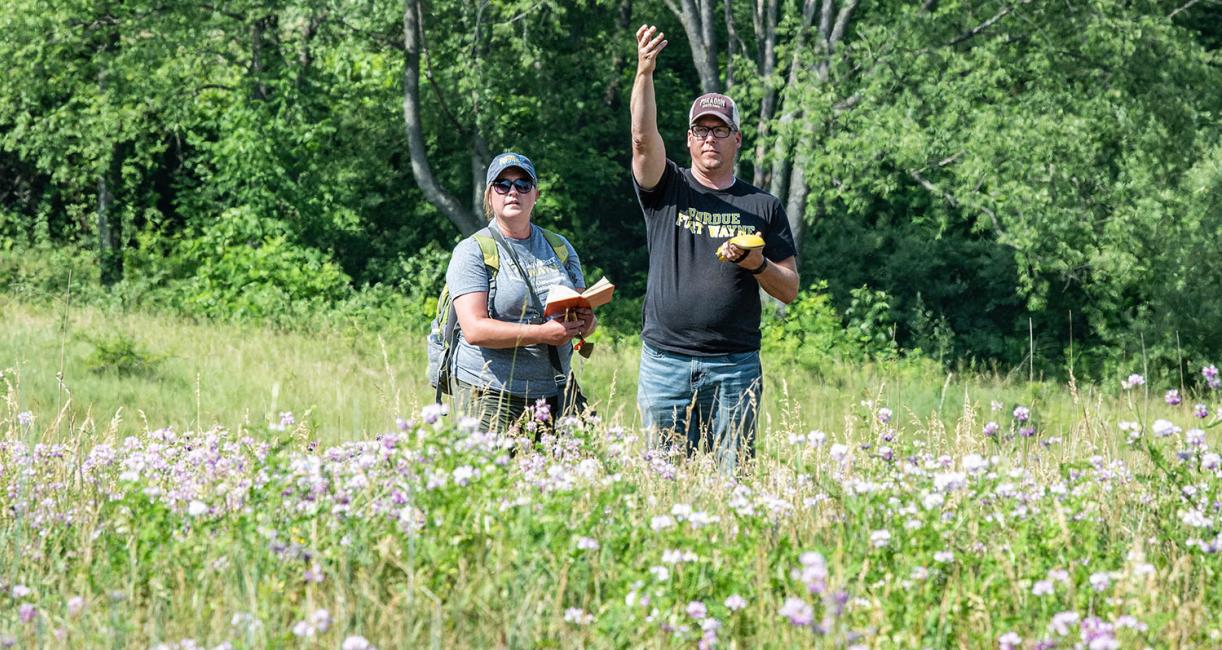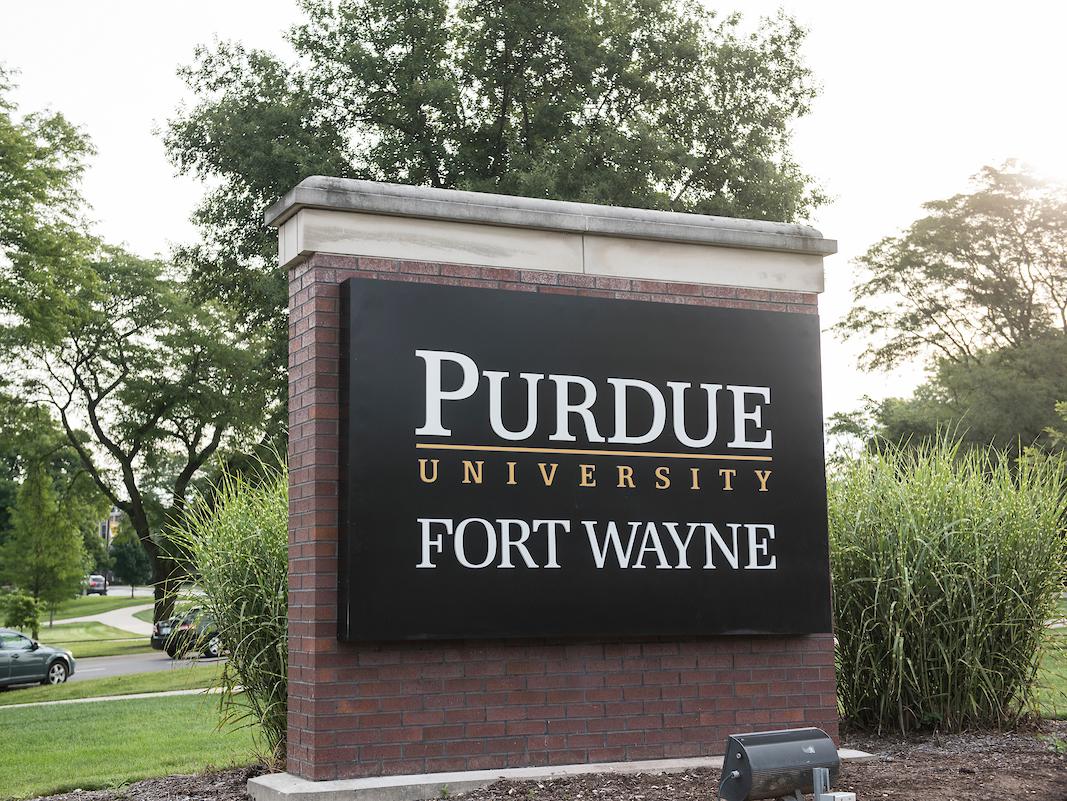





Juniors Marissa Wohlfeil and Emily Doctor at the archaeology field school.

Professors Jamie Cochran-Smith and Andrew Smith from the PFW Department of Anthropology and Sociology

Sophomore Julian Colon at the archaeology field school.

Keeping track of the excavation sites at the archaeology field school.




Digging through time: Archaeology field school students looking for historical clues
By Blake Sebring
June 29, 2023
Despite what the Indiana Jones movies have been leading us to believe for more than 40 years, real archaeology can be far from glorious. Usually, it requires dealing with hot weather, ticks, mosquitoes, poison ivy, and hard work digging holes in the hope of finding things as small as a penny.
But archaeologists lean into the hardships and love the work anyway. They get excited about sifting through time to find pieces of history, saying it shouldn’t be easy to earn those secrets. And when they put together all those artifacts with history, they can make a story come alive.
They also know how to have fun, as shown by a group of nine students working at a field school led by Purdue University Fort Wayne anthropology professors and spouses Jamie Cochran-Smith and Andrew Smith. It’s the second year in a row they’ve directed the six-week course, this time at a site across the Ron Venderly Family Bridge on campus and at the Trine State Recreation Area in Fremont.
“They pretty much teach you how to be an archaeologist, what the actual job is, the methods, the dirty work,” said PFW graduate student Whitney Hadley-Salay. “Sometimes people realize this isn’t the job for me because I can’t handle the heat, the outdoors, and it’s really physically trying.”
The nine students dug more than 600 holes over the six weeks, which because of the recent lack of rain, meant cracking ground as hard as cement to dig deep enough to find the change in soil colors. Luckily, they laughed a lot.
“During the first week, we were already picking on each other, teasing and things like that,’’ said PFW junior Marissa Wohlfeil. “If you are not open to teasing and stuff, then people are going to get mad. It’s a good group, and I’ll actually miss them when it’s over. I’ll probably never see half of them again because they are not from here.”
There are students from four other universities, all looking to earn cultural resource management certificates, which 85 percent of archaeologists need to work in the field, and Cochran-Smith said the PFW field school is one of a few across the country concentrating on that certificate. It is funded by PFW and a grant from the U.S. Department of the Interior’s National Park Service's Historic Preservation Fund, which is administered by the Indiana Department of Natural Resources’ Division of Historic Preservation and Archaeology.
“It’s about what I expected, though finding stuff is more exciting than I thought it would be,” said PFW junior Emily Doctor. “We’ve all made friendships, and we all joke that we are a little family. We’re all super nerds about this, especially when we find cool rocks. We all have a pocket dedicated to rocks that we find that aren’t artifacts.”
Most of the students want to teach at a university and chase their exploration passions during the summers.
“There’s something about constructing a narrative through material evidence that is really beautiful to me,” said PFW sophomore Julian Colon. “Just going out into the world looking through the archaeological record and finding those materials to then construct the narrative fills me with a lot of passion and joy.
His archaeology interest was sparked by an anthropology book.
“It made me want to look into the past to try to understand not just humanity’s past, but where humanity is going,” Colon said. “One important thing is that human history is a resource, something that is finite. When we so callously build over it or destroy it, we’re destroying something that can’t come back. I think it’s important to preserve those things.”
The team is usually examining items that are around 3,000 years old. They found pottery shards, bits of tools, bricks, and small drills.
“Even if there’s only a little data,” Cochran-Smith said, “we’re able to piece that together with previous background research that other archaeologists have done and then try to bring it all together.”
Both products of the anthropology program during their undergraduate days, the Smiths have also been asked to help rebuild the archaeology subset of the Department of Anthropology and Sociology. They plan to lead another field school next year.
“We need people trained to do this cultural resources work all over the country because it’s understaffed right now,” Cochran-Smith said. “We need those people educated to preserve our country’s resources.”




